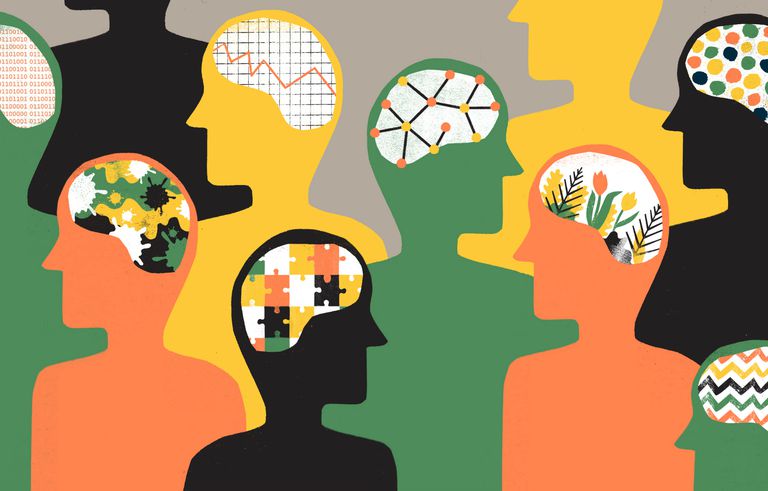
A national school-based survey of adolescents and their behaviors and experiences during COVID-19 provides first-of-its-kind information about how the pandemic impacted the nation’s high school students — and the findings are bleak.
Developed by the Centers for Disease Control and Prevention (CDC), the results of the Adolescent Behaviors and Experiences Survey, or ABES, show that 24% of adolescents self-reported going hungry or experiencing economic insecurity during the pandemic; more than 28% reported a parent had lost a job, and 22% reported losing their own job.
Additionally, 55% of respondents said they had experienced mental abuse by a parent during the pandemic and 11% self-reported experiencing physical abuse by a parent.
Students who identified as gay, lesbian or bisexual and those who identified as “other” or “questioning” had higher self-reported levels of mental abuse by a parent when compared to heterosexual students.
Gay, lesbian or bisexual students experienced a higher prevalence of physical abuse by a parent than straight students and students questioning their sexual orientation.
“These findings indicate that adolescents have encountered disruptions and adverse experiences during the pandemic that might impact their immediate and long-term health and well-being,” the study’s authors noted in summary. “The finding that more than half of adolescents reported emotional abuse and one in 10 reported physical abuse by a parent or other adult in the home during the pandemic is a public health concern.”
Moreover, those who wrote the study noted that the self-reported data provides insight into potential child abuse during the pandemic because many students lost contact with mandated reporters as schools shut down to prevent the spread of COVID-19.
“Therefore, the self-reported data in this report are critically important to elucidate the occurrence of child abuse during the pandemic,” the authors wrote, adding the findings underscore the “need for enhanced violence surveillance and prevention strategies during public health emergencies.”
In Florida, teachers and school personnel are included in a lengthy list of professions required to report suspected abuse. Gov. Ron DeSantis pushed for schools to reopen during the pandemic noting that public schools play a role in the fight against child abuse and student hunger.
Released by the CDC last week, the findings from the ABES questionnaire are based on a sample of responses from 7,705 high school students at 128 different public and private schools nationwide. The ABES survey was administered by the schools between January and June 2021.
The school response rate was 38%, the student response rate was 48%, and the overall response rate was 18%.
There had been analyses of adolescents’ mental health during the pandemic, including one that showed emergency department visits for children aged 12-17 had increased by 31%. But before the ABES survey, there was little known about other adolescent experiences such as economic and food insecurity, abuse by a parent, and alcohol and drug use.
In developing the ABES survey, the CDC borrowed heavily from the Youth Risk Behavior Survey (YRBS), a school-administered survey that asks questions about behaviors that contribute to unintentional injury and violence, tobacco product use, and alcohol and other drug use. YRBS also includes questions about sex, diet, and physical activity.
The ABES questionnaire added 12 more questions for high school students to answer across six subject areas: abuse by a parent; economic and food insecurity; poor mental health; school and social engagements; the use of telemedicine; and increased use of alcohol and drugs.
Among students self-reporting as having “ever” used alcohol and other drugs, roughly one in three reported “using these substances more during the pandemic.”
Moreover, roughly 32% of the high school students self-reported using tobacco, alcohol, or marijuana or misusing prescription opioids between January and June 2021, when the questionnaire was administered.
Approximately 22.4% of students who drank alcohol reported drinking six times or more a month.
Overall, about 37% of high school students self-reported having poor mental health most or all the time during the COVID-19 pandemic. Nearly one in five high school students indicated they had seriously considered attempting suicide during the pandemic. Nine percent reported having attempted suicide.
Gay, lesbian or bisexual students had the highest prevalence to commit suicide, followed by “other” or questioning students. Heterosexual students had the lowest prevalence.
A feeling of connectedness also impacted the students’ mental health experiences.
Students who self-reported “feeling close to persons at school and being virtually connected to others during the pandemic” had better mental health experiences than those who did not report feeling connected with others.
About 28.4% of students who felt connected to others at school and virtually reported poor mental health, compared to 45.2% of students who did not report feeling connected.
There was a similar pattern found for students who attempted suicide. While 19% of students overall reported seriously considering attempting suicide, that figure dropped to 14% for students who reported feeling connected to others. It jumped to 25.6% for students who did not feel connected.
Florida Behavioral Health Association CEO Melanie Brown-Woofter said the findings on mental health and substance abuse patterns were not surprising.
In 2018, more people in Florida died from suicide than in automobile accidents, and suicide was the third-leading cause of death in Florida among 10- to 24-year-olds, according to statistics published by the American Suicide Prevention Foundation. Woofter noted that adolescents could be mirroring their parents’ behavior specific to the use of alcohol, tobacco and marijuana.
“It reflects what we’ve been saying all along and what we’ve been seeing in our clinical practice,” said Brown-Woofter, who advocates for community mental health and substance use treatment providers. Her members treat uninsured, underinsured and Medicaid-eligible adults and adolescents.
Facing a growing demand for mental health and substance abuse services, lawmakers included $126 million in recurring general revenue and more than $50 million in one-time spending for community mental health and substance abuse disorder services in the state fiscal year 2022-23 budget.



